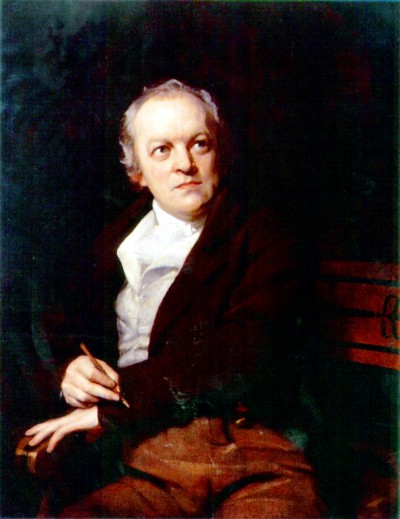William Blake (William Blake)

William Blake (28 November 1757 – 12 August 1827) was an English painter, poet and printmaker. Largely unrecognised during his lifetime, Blake is now considered a seminal figure in the history of the poetry and visual arts of the Romantic Age. His prophetic poetry has been said to form “what is in proportion to its merits the least read body of poetry in the English language”. His visual artistry led one contemporary art critic to proclaim him “far and away the greatest artist Britain has ever produced”. In 2002, Blake was placed at number 38 in the BBC’s poll of the 100 Greatest Britons. Although he lived in London his entire life (except for three years spent in Felpham), he produced a diverse and symbolically rich oeuvre, which embraced the imagination as “the body of God” or “human existence itself”.
Although Blake was considered mad by contemporaries for his idiosyncratic views, he is held in high regard by later critics for his expressiveness and creativity, and for the philosophical and mystical undercurrents within his work. His paintings and poetry have been characterised as part of the Romantic movement and as “Pre-Romantic”. Reverent of the Bible but hostile to the Church of England (indeed, to all forms of organised religion), Blake was influenced by the ideals and ambitions of the French and American Revolutions. Though later he rejected many of these political beliefs, he maintained an amiable relationship with the political activist Thomas Paine; he was also influenced by thinkers such as Emanuel Swedenborg. Despite these known influences, the singularity of Blake’s work makes him difficult to classify. The 19th-century scholar William Rossetti characterised him as a “glorious luminary”, and “a man not forestalled by predecessors, nor to be classed with contemporaries, nor to be replaced by known or readily surmisable successors”.
Blakes’s last years were spent at Fountain Court off the Strand (the property was demolished in the 1880s, when the Savoy Hotel was built). On the day of his death (12 August 1827), Blake worked relentlessly on his Dante series. Eventually, it is reported, he ceased working and turned to his wife, who was in tears by his bedside. Beholding her, Blake is said to have cried, “Stay Kate! Keep just as you are – I will draw your portrait – for you have ever been an angel to me.” Having completed this portrait (now lost), Blake laid down his tools and began to sing hymns and verses. At six that evening, after promising his wife that he would be with her always, Blake died. Gilchrist reports that a female lodger in the house, present at his expiration, said, “I have been at the death, not of a man, but of a blessed angel.” Since 1965, the exact location of William Blake’s grave had been lost and forgotten as gravestones were taken away to create a lawn. Blake’s grave is commemorated by a stone that reads “Near by lie the remains of the poet-painter William Blake 1757–1827 and his wife Catherine Sophia 1762–1831”. The memorial stone is situated approximately 20 metres away from the actual grave, which is not marked. Members of the group Friends of William Blake have rediscovered the location and intend to place a permanent memorial at the site.
Born
- November, 28, 1757
- United Kingdom
- Soho, London
Died
- August, 12, 1827
- United Kingdom
- Charing Cross, London
Cemetery
- Bunhill Fields Burial Ground
- London Borough of Islington, Greater London, England
- United Kingdom



